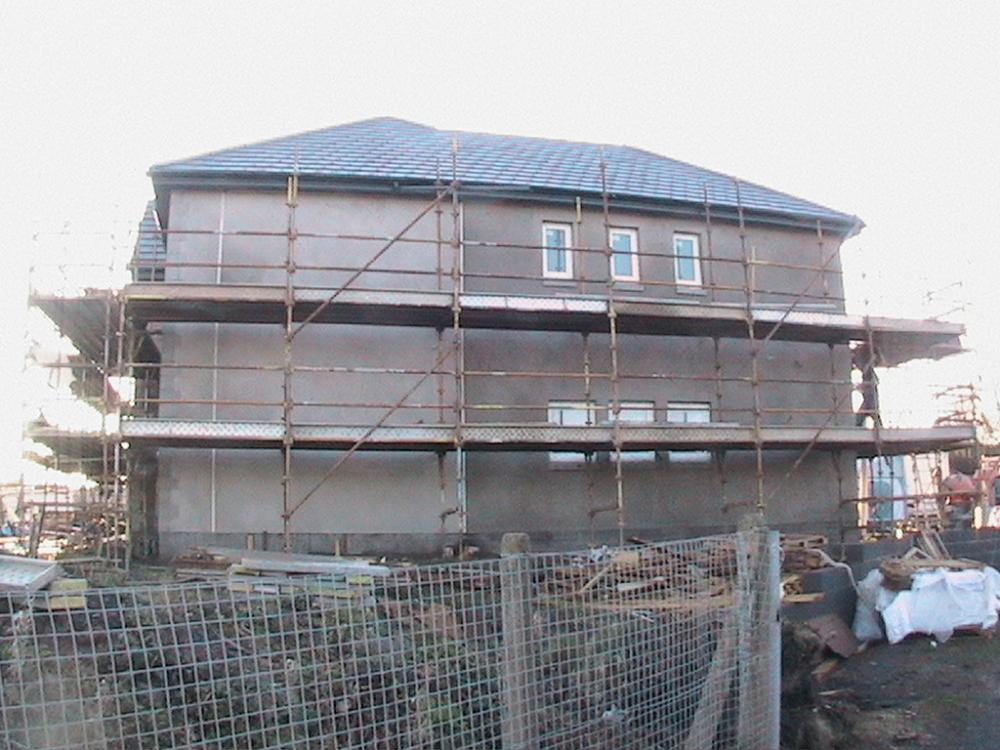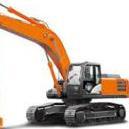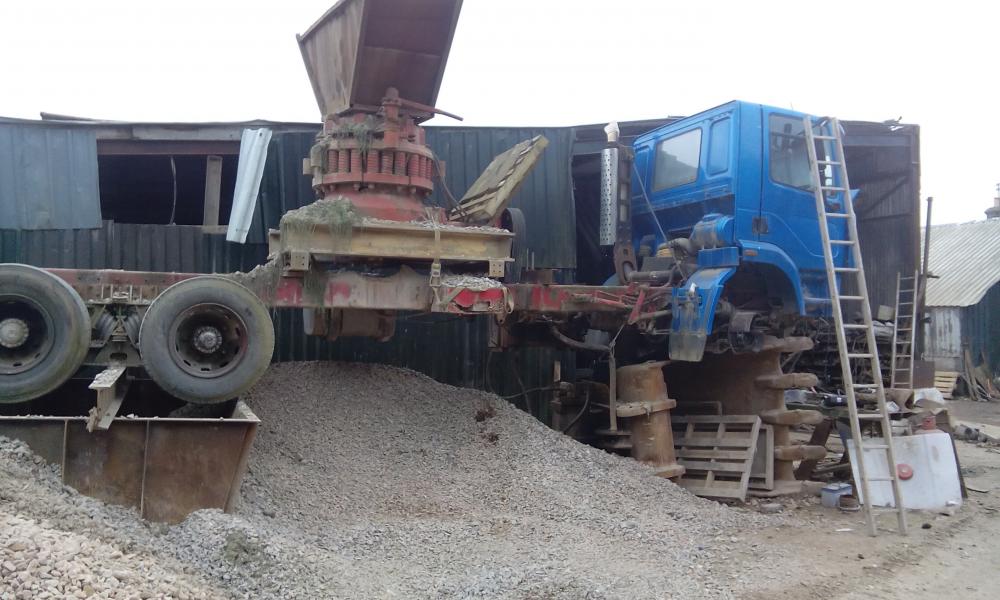Search the Community
Showing results for tags 'health and safety'.
-
Hey everyone, My Architect has pointed out in his fees: Principle Designer – this service, to monitor Health & Safety and provide a H&S file is required by law. All design consultants and sub-contractors should design the property so that it can be constructed and maintained safely and any unusual risks identified so that appropriate precautions can be taken. I attach a document outlining the clients duties under the regulations. We can undertake this role at an additional fee will be required at 0.25% of the contract sum or a maximum fee of £6,000 + VAT (ME) I guess this is something I can manage myself and ensure all the required H&S on site is in place as its my residential home I am demolishing and rebuilding? (ARCHITECT) You can, we will need to produce a H&S document up to design stage and you can take over from there as Principle Designer and Principle Contractor and Client - you will be wearing a lot of hats. I will send you the CDM guides from www.hse.gov.uk/construction On my self build, I am the client and I will personally manage without a principal contractor. I will bring in all contractors such as groundworks, bricklayers, and general construction myself, rather than have one main contractor as their fee will blow my budget. So the principal designer is supposed to manage the construction phases of a project, and generally liaises with the client. Well, I want to be both of these and dont see any reason to pay someone else to manage that relationship on my behalf. From a H&S perspective, has anyone managed this as apparently I have to have a H&S site manual up to date should any authority turn or request one? My Arc will do it up to design stage then its passed over to me. Is there much else to add in there? I have read the manuals but it's all common sense stuff to be honest However, do you think its best to appoint a Principal designer and is it worth paying out the above for this type of role to save me the time and hassle? Just seems expensive, but this is a 5 bed detached house 450-500sqm. Thanks Chris
- 28 replies
-
- h&s
- health and safety
-
(and 1 more)
Tagged with:
-
I have put this thread here, as it really belongs with the CDM role / Health and Safety. Has anyone considered this? Though the numbers are small, we do have people coming on and off site - and some of us sometimes have a number of different subbies over periods of time etc. I have been consulting an expert over the gym where I own a small stake, and where the activity is as vigorous as any building site, and the points made have been: - Washing hands is still the key. Traditional soap is as good as gels etc. Having hot water is not quite as important as I thought it was. - Regularly wipe down areas touched by a number of different people - especially door handles and light switches, but also taps, electric sockets, whiteboard pens, buttons on drinks machines, handles on doors or equipment if used by different people etc. - Corona Virus lasts up to 48 hours on a surface. - Laminated signs with instructions on doors where people enter, in the washing hands / bathroom area, and on noticeboards. - Make a summary note in any Health and Safety manual / file / procedure. - Encourage wearing of gloves where possible / appropriate. (Either a gym or a building site probably have some glove--wearing anyway). - Have a supply of robust disposable gloves available, in case you need to insist. The reasons for self-builders to pay a modicum of attention seem to me to be twofold: 1 - For its own sake, to keep things rolling / be on top of things in a safe working environment for staff, and any regulators etc who visit. 2 - To have a suitable set of reasonable measures in place in case there is any attempted comeback later from any source (though it is unlikely) - the famous arse cover. Does anyone have suggestions / comments? Ferdinand
- 16 replies
-
- 2
-

-
- corona virus
- health and safety
-
(and 1 more)
Tagged with:
-
Thought it might be useful to detail an accident that happened on our site during the main construction if only to prevent others from having a similar issue. I'm sure that we must have done some things wrong here, but there were others to blame in this tale too, and the events that unfolded seemed very bizarre to me. We used a registered scaffolding company to hire the scaffolding from and this was erected in August 2009. It was used for several months to do all of the main construction work and then towards the end of its time here someone fell off it. We used a particular builder to do all of the timber frame work, he supplied his own workers, and we paid him (and only him), in cash as he requested. We never paid any money directly to his team members. Towards the end of 2009 he sent a new guy here to do some work on the soffits and he arrived along with one of the regular team (the boss wasn't on site that day which wasn't that unusual as it was often just members of his team). The OH was living in a caravan on site at that time so greeted the 2 guys, one of whom he knew quite well as he had been working here for several months. He offered them tea and bacon rolls as he tended to do most mornings and went into the caravan to sort that out. About 10 minutes after they arrived there was a shout and the new guy had apparently fallen from the first level of the scaffolding landing on his arse (see photo to see the height of the first platform for reference). His co worker hadn't seen him fall and nor had my hubby who was in the caravan at the time. He was lying on the ground so my hubby called an ambulance. He said that the guy then got up, staggered to his car, put on his hi vis jacket and hard hat and sat in his car. When the ambulance arrived they suggested that he shouldn't have got into his car, and that they might get the fire brigade out to remove the roof in case he had damaged his neck. The guy refused their help at that point, said he wasn't having his car wrecked, and drove home. My husband reported the accident to the scaffolding company whereupon the owner drove to the site and attached an insurance certificate to the scaffolding dated that day. He said that the scaffolding wasn't signed off to use prior to that date even though it was hired back in August, several months before and had been used pretty much daily. Clearly he hadn't insured the site as he should have done. Health and Safety came to the site too and declared that some 'clips' were missing from the scaffolding, and put a notice on it declaring it not to be used. The scaffolding company came and put the clips on and it was then signed off as able to be used again. Apparently later that day the guy who fell off went to A&E and declared that he had hurt himself badly. He then engaged a no win no fee solicitor and took himself off to Australia to 'convalesce' or so he claimed. We reported the accident to our insurance company, and stated that the worker had been supplied by the contractor who was erecting the timber frame, and the scaffolding was supplied by the registered scaffolding company. The first issue we had was that the builder denied having supplied the worker. This left us with an issue as our insurance company said that we couldn't prove that the worker came via the main builder, and nor could we prove that we hadn't employed him direct. The scaffolding company collected the scaffolding and put themselves into liquidation meaning that the no win no fee lawyer came after us. My husband had to make statements and years later it was still going on with any settlement the insurance company was prepared to make reducing as time went on. It all seemed quite bizarre to us however that it was our insurance cover that was being claimed against when there were 2 other parties involved. In hindsight we should probably have taken a register of every person on site and who they were supplied from, and required every worker to sign in when they attended. We possibly should have known that scaffolding had to have an insurance certificate attached to it, but we believed that hiring from a registered company would have meant that we were completely covered as they would do the right things. Ironically my husband had refused to hire the scaffolding from anywhere other than a registered scaffold company in order to comply with H&S, but ultimately it did us no good!
-
The H&S rebel lurks within me so I thought I would rely on statistics instead. Has a safety boot saved you from injury onsite anytime in the last five years?
- 17 replies
-
- h&s
- health and safety
-
(and 2 more)
Tagged with:
-
Has anyone provided any means of internal fall protection on their build, specifically during the roofing phase? I had an unwanted visitor by way of the health and safety inspector and he now wants me to provide fall protection. Air bags or bean bags was suggested but neither seem readily available in NI. Trestle planks and plywood it might have to be.
-
So I am on the naughty step, health and safety visited site today and served me a prohibition notice. Basically roofers working with insufficient scaffolding. Can anyone recommend scaffolding companies in NI. Buying my own is not an option has to be a certified installation.
- 29 replies
-

I kid you not: this is where I get my stone from
ToughButterCup posted a topic in Building Materials
I've tried for a year not to post this image. I just couldn't take the pressure any more. Goggle and weep. This where I get my hardcore - and a lot more. A lot more The keys are in the ignition, there's a copy of the Daily Mirror on the dash. Please don't tell anyone. -

Health and Safety: a summary of the research
ToughButterCup posted a blog entry in Salamander Cottage
This article is interesting enough to read in full, but we’ve not got the time….so here’s a copy of it’s own summary (unedited and in its original format) How do workers, their material, equipment and workplace relate to construction accidents? · Problems arising from workers or the work team, especially worker actions or behaviour and worker capabilities, were judged to have contributed to over two thirds (70%) of the accidents. This points to inadequate supervision, education and training. · Poor communication within work teams contributed to some accidents, due to the physical distance between work colleagues or high levels of background noise. · In many cases, the accident occurred when those involved were not actually performing a construction task, but moving around site, for example. · Workplace factors, most notably poor housekeeping and problems with the site layout and space availability, were considered to have contributed in half (49%) of the accident studies. Standards of housekeeping and workplace layout with respect to safety are low in construction when compared with other industrial sectors. Despite poor weather often being cited as one of the reasons for construction having a poor safety record, this research found little evidence in support of this. · Shortcomings with equipment, including PPE, were identified in over half (56%) of the incidents. Poor equipment design and inappropriate use of equipment for the task were prominent aspects of this. Designers, suppliers and purchasers of equipment appear to give insufficient attention to the safety of users. · Deficiencies with the suitability and condition of materials, including packaging, featured in more than a quarter (27%) of incidents. The operation of the supply/purchase chain at present appears to act as a barrier to innovation as far as safety is concerned. · Originating influences, especially inadequacies with risk management, were considered to have been present in almost all (94%) of the accidents. · Frequently, no risk assessment had been undertaken covering the circumstances involved in the accident. Where a risk assessment had been carried out, it was often found to be superficial and unlikely to have prevented the accident. · It appears that PPE is relied upon habitually as a substitute for risk elimination or reduction at source. · It was judged that up to half of the 100 accidents could have been mitigated through a design change and it was found that, despite CDM, many designers are still failing to address the safety implications of their designs and specifications. Reference Loughborough University and UMIST (2003) Research Report 156 : Causal factors in construction accidents cited in Recent Construction Specific Research (2015) http://www.hse.gov.u…es/research.htm(downloaded February 2015)-
- research
- health and safety
-
(and 1 more)
Tagged with:






